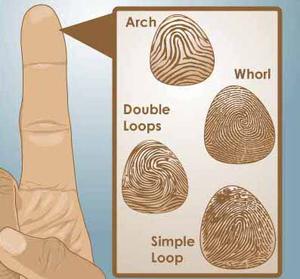Aussie government agency proposes finger biometrics for background checks
Australian government’s crime tracking agency has proposed tying fingerprints to passports and drivers licenses in an effort to reduce false identification for background checks; the plan, under high-level government talks, would reduce the time spent by law enforcement and customs agencies on sifting through possible identification matches

Major characteristics of the human fingerprint // Source: handresearch.com
Australian government agency, Crimtrac, has proposed tying fingerprints to passports and drivers licenses in an effort to reduce false identification for background checks. The plan, under high-level government talks, would reduce the time spent by law enforcement and customs agencies on sifting through possible identification matches.
Darren Pauli writes in Computerworld that Crimtrac manager of background checking, Roberta Kennett, said agencies must trawl through an extensive list of identification matches that are returned by searches under Crimtrac’s National Police Checking Service.
“When someone applies for a name-based check, it is limited because there could be a broad algorithm of variations in spelling, which brings back a large field that then must be manually eliminated,” Kennett said. “Fingerprints are a much more targeted means of identification. It essentially tidies up matching, saves time and wrong identifications.”
Kennett said tying records to fingerprints has limitations in the scope of data collection, insofar as those fingerprints listed on the National Automated Fingerprint Identification System (NAFIS) are not necessarily tied to crimes. The NAFIS central database contains some 4.4 million records which are accessible through forty workstations across the country for fingerprint uploads and matching.
“The reform would require changes to consent specific to each agency. The [Federal] Attorney-General would have to be involved and it would require consultations with police,” she said, adding it was “purely a proposal.”
NSW police use mobile fingerprint scanners to verify criminal identities, shore-up convictions, and bail breaches. Captured fingerprints are uploaded to NAFIS using embedded wireless cards, and cross-checked with recorded fingerprints to provide officers with an identity match.
The devices access the database, which contains some four million fingerprint records from every Australian state, within 90 seconds of capturing an offender’s fingerprints.
